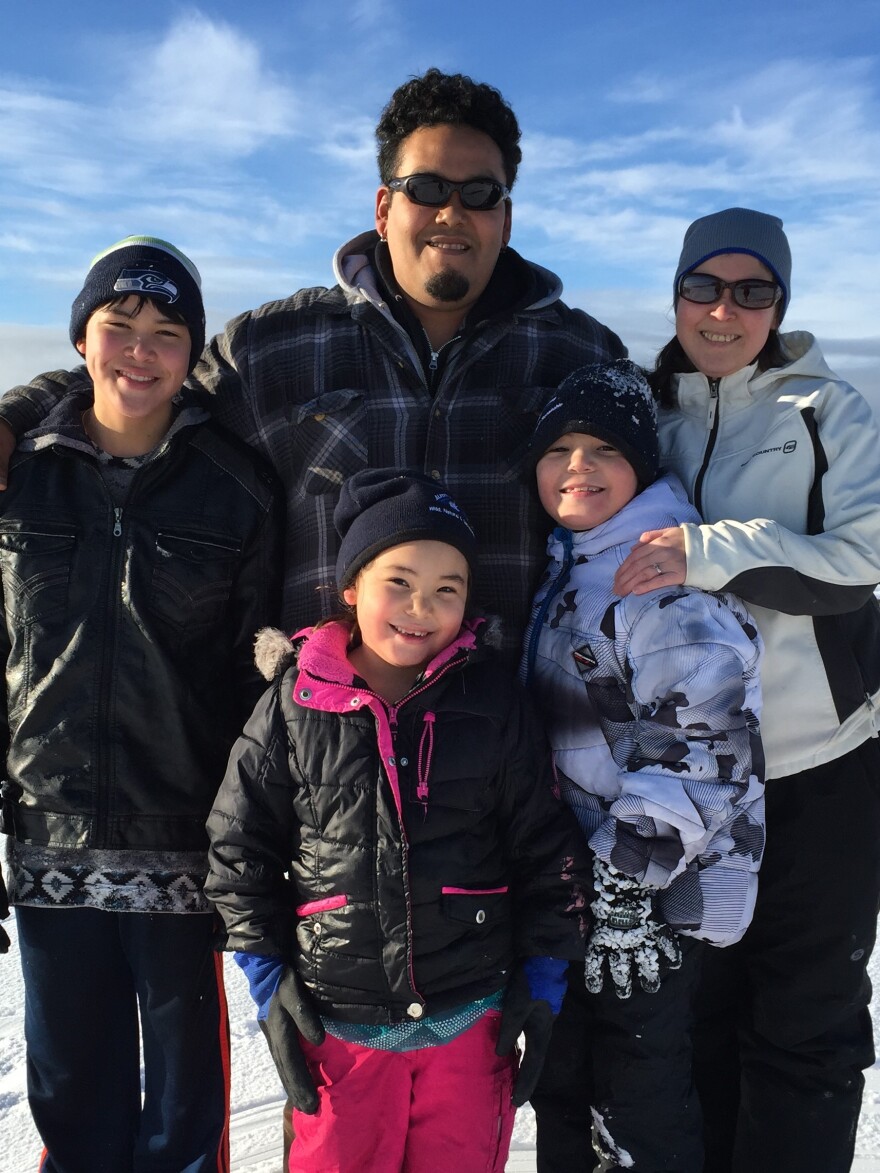On April 28, Andrew Lind's marine adventure turned into a near-death experience when he spent over an hour and a half in frigid water without a flotation device. A search-and-rescue-effort out of the Alaska Peninsula village of Port Heiden reached the swamped kayaker just in time.
Port Heiden (Meshik) Bay is partly sheltered from the ocean by a narrow strip of land that stretches north across the mouth of the bay. At the end of it is Stroganof Point, a popular subsistence hunting spot about five miles across the water from the village.
That’s where 36-year-old Andrew Lind was headed on a Thursday afternoon.
“Well, it was a beautiful, flat calm day, and I wanted to go out kayaking out on the ocean and look at the wildlife.”
Lind describes himself as a “normal village guy.” Originally from Chignik Lake, he does subsistence and he’s a crew leader for the haz-mat remediation project at Port Heiden’s former military base, Fort Morrow.
Lind set out just after 1 p.m. and paddled to Stroganof Point in his 8.5-foot plastic kayak. He took in the sights, and then turned around
“On my way back, halfway back I texted my wife and told her I’m on my way back.”
Lind sent that text at 3:37 p.m. He’s not sure how long it was after that that the water got really rough.
“By that time the wind and the waves started picking up and I got caught up on the main channel and a white-cap tipped me over. It all happened slow motion.”
Lind got himself out of the boat, and came up for air. Then he started trying to put the kayak upright. But every time he tried to flip it, it would just scoop up water and get more swamped.
“So I just left the kayak upside down so there was an air pocket in the bow.”
He wasn’t wearing any floatation device, but he was able to keep his head out of the water by hanging onto his boat. Lind says pretty soon his arms just cramped around the kayak, holding him in place.
Based on the time of the text message, Lind and his friends and family figure he was in the water somewhere between one and a half and three hours. According to NOAA, the average water temperature there this time of year is just under 40 degrees.
“It felt like I was in there forever, like nobody was gonna come.
Somebody did come, even before the rescue crew. But it wasn’t a human someone.
“I must have passed out or something, because I heard a knock on the kayak, like somebody knocking on the door, you know? And when I woke up a seal was like two feet away from me, like a guardian angel, keeping me awake.”
Back in Port Heiden, Lind’s wife Miranda realized he was overdue. Around 5:30 she started calling people to help. James Christiansen is Lind’s brother-in-law and a pilot who owns the only private plane in the village.
“Went out over the ocean check the islands across the bay, and couldn't find him. So we started searching between the bay side and the mainland, and my daughter saw something in the water.”
It was just 15 minutes after they took off that Christiansen’s daughter spotted Lind about two miles offshore. They began circling low over him, and radioed to people in the village who were launching two skiffs.
Bruce Bishop, a co-worker of Lind’s, drove one of the boats.
“Ironically, the first skiff went out in front of me and got almost to him and ran out of gas. Somebody had taken the gas out of his skiff!”
Luckily Bishop’s skiff had a full tank, and he and two other men made it to Lind just after 7 p.m.
"Oh my god, he was just this horrible blue color," recalls Bishop. "And Andrew’s a big boy, probably 260 or better. It was everything three of us could do to drag him over the side of the boat."
The boat crew says Lind was coherent as they got him out of his wet clothes and into dry ones. Lind doesn’t remember anything from when he was pulled from the water until he came to at the clinic. His core temperature had dropped to 92 degrees by the time health aides started warming him up with heated blankets.
This is not your typical search and rescue story; the entire operation happened in less than two hours, with no outside help from State Troopers or the Coast Guard.
Of course, there was plenty of luck involved. If Lind hadn’t had cell phone service, if Jimmy Christiansen had been flying elsewhere that day... so many little things could have ruined this happy ending.
But one thing that didn’t seem like luck is the way people in Port Heiden knew how to spring into action.
Bruce Bishop, the skiff driver, says that’s not an accident. He and some of the other rescuers all work at the hazardous waste cleanup site, so they all have up-to-date first aid, CPR, and other training.
But, says Bishop, it’s more than just the training.
“We work together every day, so we have really good communication skills between us. That’s probably what made this all work.”

Andrew Lind says what kept him kicking was faith and his family.
“There was lots of praying to God, talking to my family, my kids and my wife. Who would take care of them if something did happen? I think that’s what pushed me to hold on.”
He doesn’t know what to make of the seal’s appearance. Later, the rescuers would report that seal lingered near the kayak until well after Lind was safely out of the water.


